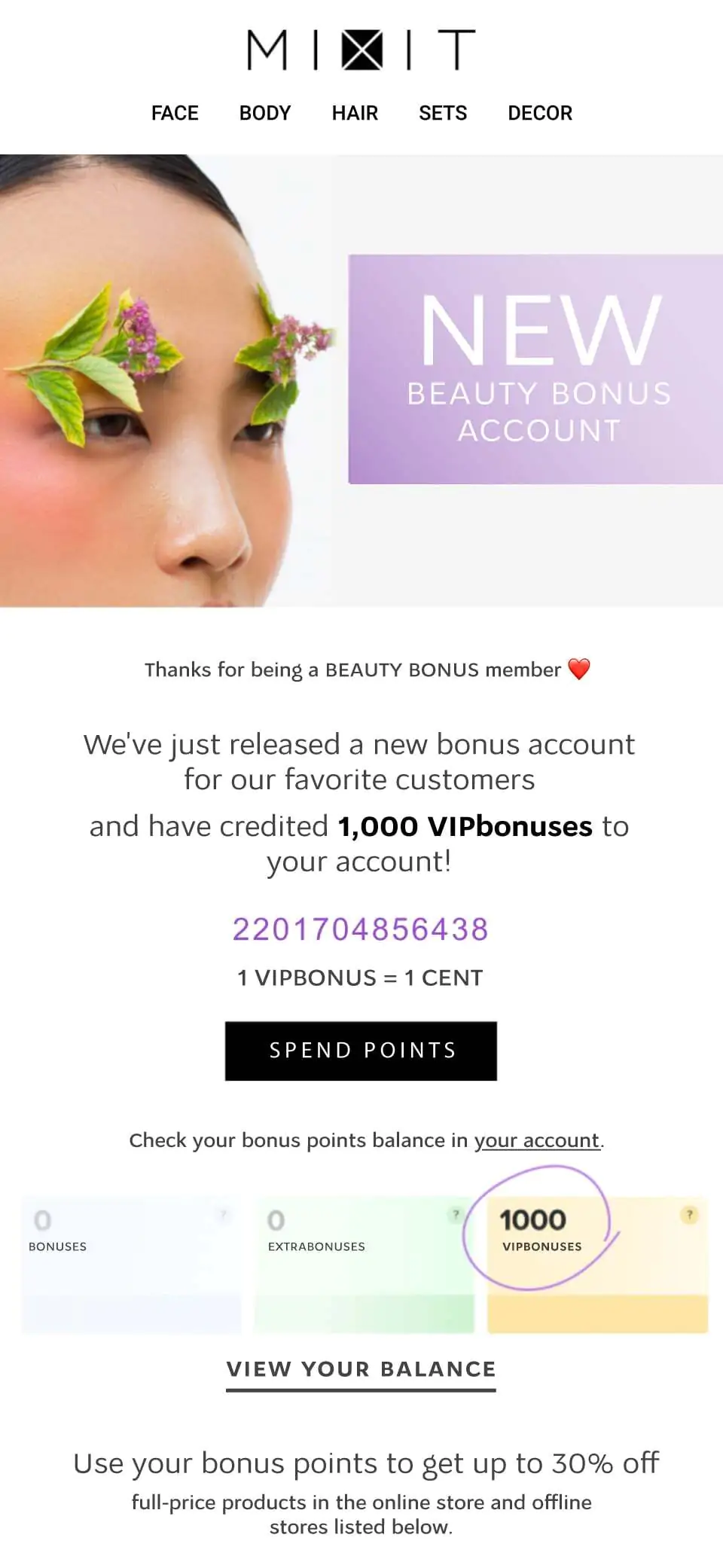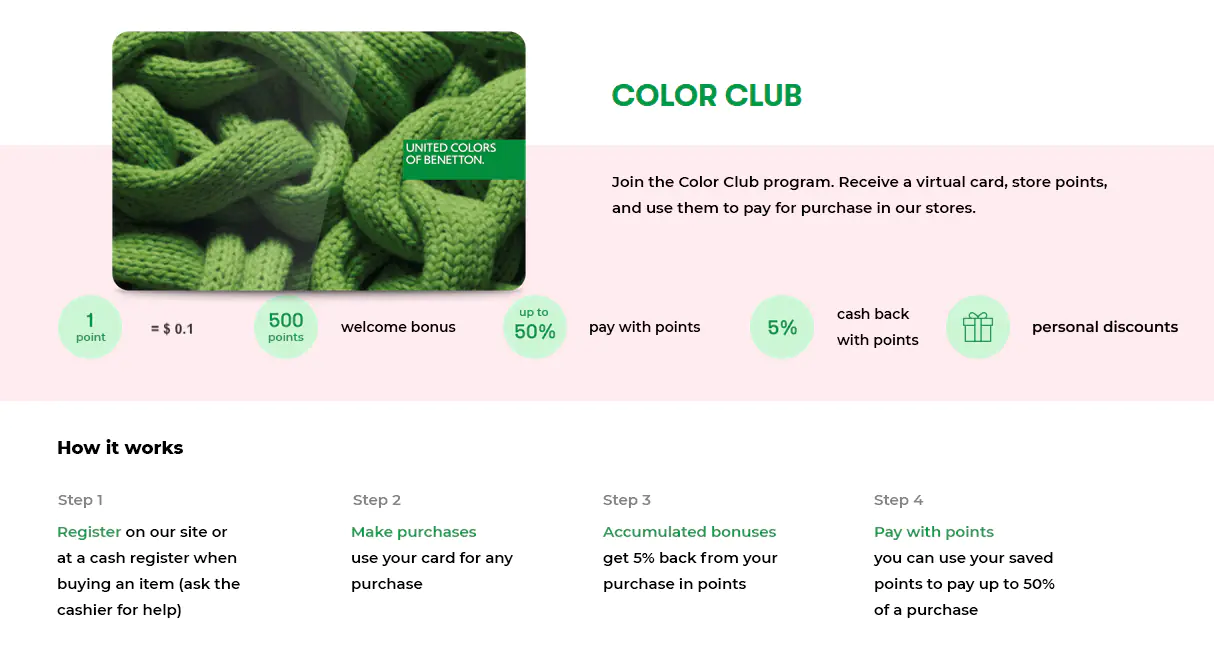Discover the benefits of customer loyalty programs in retail and explore 5 types of programs with real-life examples for small businesses.
November 6, 2023
5 Types of Loyalty Programs for Retail Customers
Question
We’re going to launch a loyalty program. Which type is better to choose?
Answer
Your loyalty program must align with your business goals; you can choose a points-based system, discount cards, partner rewards, cashback incentives, or a hybrid model.
Let’s analyze five key types of retail loyalty programs and outline some tips on how to enhance the effectiveness of any loyalty program for optimal results.
Benefits of a Loyalty Program
Loyalty programs are essential, acting as a cornerstone in developing and sustaining strong customer relationships, enhancing profitability, and maintaining a competitive advantage in the marketplace. They provide numerous benefits for businesses, such as:
1. Customer Retention: Loyalty programs are a powerful tool for retaining existing customers. By offering rewards and incentives, businesses can encourage customers to continue buying from them rather than switching to competitors.
2. Customer Acquisition: Loyalty programs can also attract new customers. When potential customers see the benefits and rewards offered by a loyalty program, they may be more inclined to make their initial purchase with that particular business.
3. Increased Customer Lifetime Value: Loyal customers tend to spend more over time. They not only make repeat purchases but are often willing to explore other products or services offered by the same business. This increases the overall lifetime value of a customer.
4. Data Collection and Personalization: Loyalty programs often require customers to provide their information. This data can be invaluable for businesses to personalize their marketing efforts and tailor product recommendations to individual preferences.
5. Competitive Advantage: In competitive markets, loyalty programs can set a business apart from its rivals. It can be a compelling reason for customers to choose one company over another.
6. Customer Engagement: Loyalty programs engage customers by offering rewards, exclusive discounts, and special offers. This engagement builds a stronger connection between customers and the brand.
7. Word-of-Mouth Marketing: Satisfied and loyal customers are more likely to recommend a business to friends and family. This word-of-mouth marketing can be a highly effective way to acquire new customers.
8. Data-Driven Decision Making: Loyalty programs generate valuable data on customer behavior — retail businesses can use this data to make informed decisions about pricing, product development, and marketing strategies.
9. Customer Feedback: Loyalty programs often provide a channel for each customer to provide feedback. This can be used to improve products and services.
10. Long-Term Business Sustainability: Building a base of loyal customers can contribute to the long-term sustainability of a business. It provides a stable source of revenue and reduces the reliance on constantly acquiring new customers.
Five Key Types of Loyalty Programs
Points-based
In this program, points are rewarded every time members of the loyalty program make a purchase and can be converted into discounts, gifts, or additional services on their subsequent purchases. Loyalty points can also be rewarded on special occasions such as the customer’s birthday, as well as for activities such as inviting a friend to join the program, and writing product or company reviews. Essentially, points can be earned for any action that benefits the business.
A common points-based loyalty program approach is 1 point for every $1 spent. Points can then be used to pay for anywhere from 10-100% of the purchase total.
Some brands, such as our client MIXIT, go one step further by creating a loyalty program with different types of bonus points and various ways for customers to earn them. This can provide them with more variety for marketing campaigns and allow them to manage consumer spending habits — for example, if different bonus point types are offered for different product categories:

MIXIT offers its customers three types of bonus points: regular points, Extrabonuses, and VIPbonuses
Advantages of a points-based loyalty program
- Easy to maintain profit margins: The program can be structured in a way that doesn’t erode profit margins. You can incentivize customers to accumulate and redeem points strategically — for instance, allowing them to purchase an upgrade to a higher discount tier using their points or granting access to exclusive sales and discounts.
- Customer data collection: You can motivate customers to fill out surveys or provide information by rewarding them with points. These types of data are invaluable for understanding customer preferences and behavior, allowing for more effective targeted marketing efforts, loyalty programs, and product improvements.
Disadvantages of a points-based loyalty program
- Managing balances: It can be challenging to keep track of the balance sheet to monitor how many accumulated points are held in customer accounts. Accumulated points represent a liability for the company, as they are essentially a form of owed value to customers.
Discount Card Program
In a discount program, customers receive or purchase a discount card that provides a specific fixed percentage discount on their future purchases. Discounts in this program can be multi-tiered and increase based on the total purchase amount. For example, here’s what a discount program could look like:
- 3% discount for all customers upon registration
- 5% discount when the customer has spent over $100
- 7% discount when the customer has spent over $250
- 10% discount when the customer has spent over $500
Advantages of a discount card loyalty program
- Ease of implementation and maintenance: This type of loyalty program typically requires less infrastructure and ongoing management compared to more complex loyalty schemes, making it accessible to a wide range of businesses.
- Straightforward for customers: Discount card programs are straightforward for customers to understand. They know that by using the card, they receive a set discount on their purchases, which can encourage them to return and make repeat purchases.
- Immediate savings: Customers can enjoy immediate savings on their transactions, providing an instant incentive to continue shopping with the business.
Disadvantages of a discount card loyalty program
- Lack of targeted marketing: Discount card programs typically do not provide as many opportunities for targeted marketing efforts compared to other loyalty program types. Without the collection of detailed customer data, businesses may miss out on opportunities to tailor offers to individual preferences.
- Risk of card loss or inactivity: Customers may frequently misplace their discount cards or forget to use them, which can lead to a lack of engagement with the program and a missed opportunity for the business to retain their loyalty.
Partner Rewards Program
In partnership loyalty programs, multiple companies collaborate. Customers earn bonuses or cashback rewards that they can use for purchases across all partner companies.
This is a popular approach for airlines. Partners can include banks, hotel booking and car rental services, stores, charities, and more. Customers earn and redeem bonuses for purchasing tickets, products, and services offered by these program partners.
Advantages of a partnership loyalty program
- Brand recognition and customer base expansion: Partnership loyalty programs enhance brand recognition for all participating companies. Customers become familiar with and trust not only the primary brand but also the associated partners, potentially increasing their patronage across multiple businesses.
- Brand neutrality: There is no exclusive tie to a single brand or business in a partnership loyalty program. Customers have the flexibility to make purchases or enjoy services from various businesses within the program, providing them with a wide range of choices.
Disadvantages of a partnership loyalty program
- Complex and lengthy implementation: Creating a seamless and mutually beneficial program often involves significant coordination and technical integration, which can be complex and time-consuming.
- Limited partner diversity: Due to the complexities involved, partnership loyalty programs are more commonly adopted by larger corporations, such as banks and airlines, with access to payment processing systems and extensive resources. Smaller businesses may find it difficult to participate in such programs.
Cashback Program
A cashback loyalty program involves returning a portion of the purchase price to a virtual or bank card as a reward for customer loyalty. Depending on the program’s terms, participants can use cashback to cover anywhere up to 100% of the cost of goods or services. These loyalty program types necessitate a partnership between the brand and a financial service provider.
A cashback program could have the following conditions:
- 1% cashback on all purchases
- Up to 15% cashback for purchases made in specific categories
- Up to 30% cashback for purchases made through special offers from the brand’s partners. At this level, it transitions into a hybrid loyalty program, combining cashback and partnership benefits.
Advantages of a cashback loyalty program
- Flexibility: Customers can use their cashback rewards as they see fit. They have the flexibility to apply the cashback to future purchases, save it, or spend it on anything they desire, offering them greater control over their rewards.
- Universal appeal: Cashback appeals to a wide range of customers because it provides a universally appreciated benefit — money back. This simplicity makes it attractive to both occasional and frequent shoppers.
Disadvantages of a cashback loyalty program
- Cost to the business: In this type of program, businesses are essentially giving money back to customers. This expense must be carefully managed to ensure it doesn’t outweigh the benefits of customer retention.
- Risk of fraud and abuse: Some customers may attempt to exploit the system through tactics like purchase and return schemes or making excessive purchases solely for cashback rewards.
Hybrid Program
In hybrid loyalty programs, various types of rewards are combined. For example, fixed discount benefits can be supplemented with points that customers can accumulate and redeem for future purchases. Retail companies typically adopt hybrid loyalty programs when transitioning from one loyalty system to another or when integrating new elements into an existing program. Here’s an example from one of Maestra’s clients, United Colors of Benetton:

By joining the “Color Club, ” customers can accumulate points from purchases, and get access to special, personalized discounts
Advantages of a hybrid loyalty program
- Appealing to different customer types: A balance between fixed discounts and points-based rewards appeals to a broader customer base, catering to those who prefer immediate savings and those who enjoy accumulating points for future benefits.
- Enhanced engagement: Hybrid programs can encourage customers to interact more frequently by offering a variety of ways to earn and redeem rewards.
Disadvantages of a hybrid loyalty program
- Challenging to maintain: Maintaining a hybrid loyalty program can be technically challenging. Ensuring that both the fixed discount and points-based components work seamlessly requires complex processing and technical infrastructure.
- Increased complexity for customers: The introduction of a hybrid loyalty program can lead to more complex rules and terms. Customers may find it challenging to understand and navigate the program, which can potentially deter their participation and reduce overall program effectiveness.
Tips on Improving a Loyalty Program
Any type of loyalty program can be enhanced by incorporating non-monetary instruments, such as gamification, charity and environmental initiatives, and more. This is an approach that retail chain United Colors of Benetton decided to implement, taking their loyalty program to the next level, by utilizing the following:
- A members-only game (with bonus point rewards).
- A partnership with an airline to allow customers to redeem miles when shopping on UCoB’s website.
- A partnership with a clothing recycling project, which allows customers to trade in old clothes and earn bonus points.
While these elements may not directly generate revenue for the company, they can significantly boost customer loyalty and enhance the company’s reputation.


